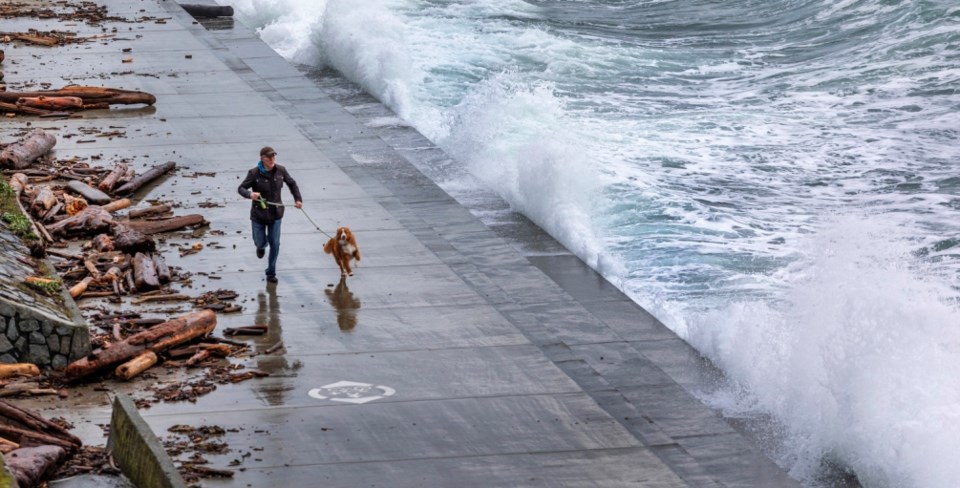A strong winter weather system prompted wind warnings for Wednesday and early Thursday in Greater Victoria and along eastern Vancouver Island from Nanoose Bay to the Island’s northern tip; waves could be up to seven metres high.
In Greater Victoria, wind gusts of up to 70 km/h were forecast until 5 a.m. Thursday. Gusts up to 90 km/h were forecast for exposed coastal areas. Rain is expected for Greater Victoria for much of the morning Thursday, easing to showers and then cloudy skies by evening.
“That strong weather system that landed on the west coast of the Island has moved into the Haro Strait and is now travelling up the inner south coast,” said Brian Proctor, meteorologist with Environment and Climate Change Canada.
He said that it was “potentially problematic” as the infrastructure of the inland coastline isn’t as hardened to the elements as those on the west coast of the Island, which commonly sees this type of winter storm.
“You are going to see three elements coming together [today]: elevated sea levels, with strong winds pushing large waves ashore,” said Proctor. “The infrastructure along the inner south coast isn’t used to that — and may be at risk.”
Waves of five to seven metres are expected on shorelines exposed to open ocean at the height of the storm.
Because of safety worries due to the elevated ocean levels and large waves, the District of Tofino moved to close its beaches early on Wednesday as a precautionary measure, but by the afternoon, the beaches were reopened after the weather system passed through the region.
It was the second time the beaches were closed this week. The first closure was on Christmas Day, with that notice rescinded the next day.
The district still advises beach goers to remain cautious, as some risks remain.
Mother Nature was kinder to the municipality of Ucluelet this time, with no beach closures during the storm. In previous years residents have seen area beaches pummelled and littered with one-tonne logs pushed onshore by powerful waves and high tides.
Another weather system is expected to hit the west coast with more rain on Friday.
As of early Wednesday evening about 1,000 B.C. Hydro customers on northern Vancouver Island were still waiting for their power to be restored after a weather system that passed through the region on Christmas Day.
B.C. Hydro worked on 11 power outages in the area on Wednesday, with most attributed to trees and branches falling across power lines.
“We are working hard to restore power to the communities of Zeballos and Tahsis, which have been without power since Monday,” said Ted Olynyk, community relations manager for Vancouver Island.
He said that the reason for the delay in getting power restored was that the same winds that knocked the trees down also prevented helicopters carrying B.C. Hydro crews from safely operating.
“We would usually fly a crew to the site and winch the crew down to the ground to affect repairs,” he said. “Because they couldn’t fly, repair crews had to reach the remote site on all-terrain vehicles, with the route itself blocked by other fallen trees.”
Repairs to the electrical infrastructure on Cortes Island was delayed because repairs to the transmission line had to be done concurrently in Lund, which is on the mainland.
Olynyk said that B.C. Hydro’s energy supply infrastructure includes a robust vegetation management program to “harden” the system to the type of winter weather systems we see on the coast — but it is being put to the test due to climate change.
“We have seen an increase in the frequency and intensity of storms over the years,” said Olynyk. “But trees don’t fall due to just a single event. These trees have endured a number of stressors over the last few years — drought, a heat dome, heavy rain and now wind.”
He said that while the stressed trees are weakened, they would still look healthy to crews clearing and thinning vegetation around lines.



